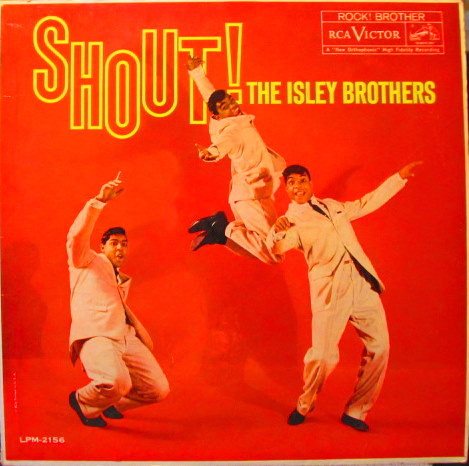Written by Claude Lemaire
For Part-6: http://soundevaluations.blogspot.com/2022/09/diving-into-disco-part-6-psychedelic.html
Dedicated to legendary deejay Robert Ouimet (1948-2022)
As the escalation and casualties of the Vietnam War grew, so did the angst and protests of the American public, along with the civil rights movement coming to a boil with the assassination of Martin Luther King Jr. on April 4, 1968.
To curb the fall out and possible riots following that tragic event, James Brown performed for a televised concert at the Boston Garden to appease the anger. Among his repertoire, he sang the very funky "I Got the Feelin'" barely out on the market as a single and an album.
Some people say we got a lot of malice
Some say it's a lotta of nerve
But I say we won't quit moving
Until we get what we deserve
"Say It Loud – I'm Black and I'm Proud"–released as a single in August 1968 and LP a few months later–became an anthem for the Black Power movement that favored self-determination for black people as promoted by Malcolm X over that of non-violent racial integration espoused by King.
Roughly the same time, comedian-singer Pigmeat Markham presented the very first funky proto-rap track with "Here Comes the Judge".
That same month Motown's Marvin Gaye had a huge hit with his psychedelic soul version of Gladys Knight & the Pips' "I Heard It Through the Grapevine" from his LP In the Groove.
He had already gained some success back in April 1967 for his duet with singer Tammi Terrell on "Ain't No Mountain High Enough"–later reprised by Diana Ross in June 1970.
Started my life
In a old, cold run down tenement slum
My father left, he never even married mom
"Love Child" sprang to life in September 1968, adopted the psychedelic soul leanings, and grew to become The Supremes' third biggest selling single of all time.
With its "3-minute" formulaic format, Norman Whitfield foresaw the writing on the wall all too well. A true visionary, he sensed the vibe of the country was a-changin', and Motown needed a change of mind to stay at the forefront of innovation.
It was hard times, needed somethin' to ease my troubled mind
I left home seeking a job that I never did find
Depressed and down-hearted, I took to cloud nine
I, I, I, I, I, I'm ridin' high on cloud nine
And so did "Coud Nine" ride high in the charts in October 1968. Composed by Barrett Strong and producer Norman Whitfield, it became a game changer and template for The Temptations as the first song to feature lead guitarist Dennis Coffey introducing the wah wah pedal for psychedelic effect, and two distinct drummers combining forces: one handling the sixteenth-note hi-hat rhythm pattern soon to be seen in 1970s cop shows and blaxploitation movies; while another concentrated on the kick, snare, and toms; in tandem creating at the time a unique syncopated loop-based groove. There are two breaks in the track where in the first instance only the drums and vocals trade places while in the second, are added bass and strings strengthening the tension. Both breaks climax into a more conventional 4/4 beat relieving the distress. It was also the first featuring singer Dennis Edwards in lieu of David Ruffin. The whole vibe was definitely darker and drug infused leading to some reluctance by Berry Gordy to give his stamp of approval for this new harder progressive formula. The song eventually won the group their first Grammy, proving Whitfield right after all.
In February 1969 the related album Cloud Nine was released. Juxtaposing piano and distorted guitar in its intro, "Run Away Child, Running Wild" combines elements of gospel and psychedelic rock, is one of the first ghetto-theme tracks to appear, and is the most progressive original composition for The Temptations, Motown, and soul music up to that point. Borrowing a page from Sly and the Family Stone, each member shares lead vocals spanning a vast range from lowest to highest, in addition to creative call and response interplay between leads and backing vocals. The rhythmic complexity demonstrates a rich tapestry. The tempo picks up the pace towards the third of the track with a hi-hat pattern later recycled by Rhythm Heritage with the "Theme from S.W.A.T." in November 1975–not to be outgunned, Toronto's T.H.P. Orchestra also hit their target in early-1976 edging even closer in tempo.
Midway through, tambourines spice up the energy, followed by organ and fuzzy electric guitar rising the tension to another degree. "I Gotta Find a Way (To Get You Back)" is a cross between the traditional uplifting Motown vibe with the snare driving the 4/4 beat, and the sort of proto-disco track we encounter around 1972-73. They would pursue this path with "I Can't Get Next to You" in May 1969 appearing on the album Puzzle People released in September.
Finally they close the very end of the decade with the spirited track "Psychedelic Shack".
In November 1968, Sly and the Family Stone released the double-hit single "Everyday People" with the funky "Sing a Simple Song" on the B-side. Combining funk with psychedelic soul, "Stand!" would follow first as a single in March 1969, then feature as the title-track on their fourth album the following month. It includes the incredibly-energetic "I Want to Take You Higher" fusing funk with distortion-driven rock.
Not to be outdone "Soul Brother No. 1" was never one to "Give It Up or Turnit a Loose" with this single in January 1969. Note that the promo single was slightly titled differently as "Give It Up and Turnit a Loose".
Hailing from Cincinnati Ohio, The Isley Brothers first came to prominence in August 1959 with the gospel-infused R&B hit "Shout" but nearly ten years later in February 1969 the formation veered harder turning on the funk tap with the single "It's Your Thing" from the album It's Our Thing.
Before we enter the 5th Dimension, we are gonna take a long summer break from this series to better explore other music facets. Until then don't forget to "Let the Sunshine In".
Reference List (Singles, albums, and labels):
"I Got the Feelin'" [King Records 45-6155]
I Got the Feelin' [King Records KS-1031]
"Say It Loud – I'm Black and I'm Proud" [King Records 45-6187]
Say It Loud – I'm Black and I'm Proud [King Records 5-1047]
"Here Comes the Judge" [Chess 2049]
Everybody Needs Love [Soul SS 706]
"I Heard It Through the Grapevine" [Soul S-35039]
In the Groove [Tamla TS 285]
"I Heard It Through the Grapevine" [Tamla T-54176]
"Ain't No Mountain High Enough" [Tamla T-54149]
United [Tamla TS 277]
Diana Ross [Motown MS711]
"Love Child" [Motown M 1135]
Love Child [Motown MS 670]
"Coud Nine" [Gordy G-7081]
Cloud Nine [Gordy GS939]
"Theme from S.W.A.T." [ABC Records ABC-12135]
Early Riser [RCA Victor KJL1-0154]
"I Can't Get Next to You" [Gordy G-7093]
Puzzle People [Gordy S-949]
"Psychedelic Shack" [Gordy G 7096]
Psychedelic Shack [Gordy GS947]
"Everyday People"/"Sing a Simple Song" [Epic 5-10407]
"Stand!"/"I Want to Take You Higher" [Epic 5-10450]
Stand! [Epic BN 26456]
"Give It Up or Turnit a Loose" [King Records 45-6213]
Shout! [RCA Victor LPM 2156 or LSP-2156]
"It's Your Thing" [T-Neck TN 901]
It's Our Thing [T-Neck TNS 3001]
The Age of Aquarius [Soul CIty SCS-92005]
____________________________________________________________________


























































No comments:
Post a Comment